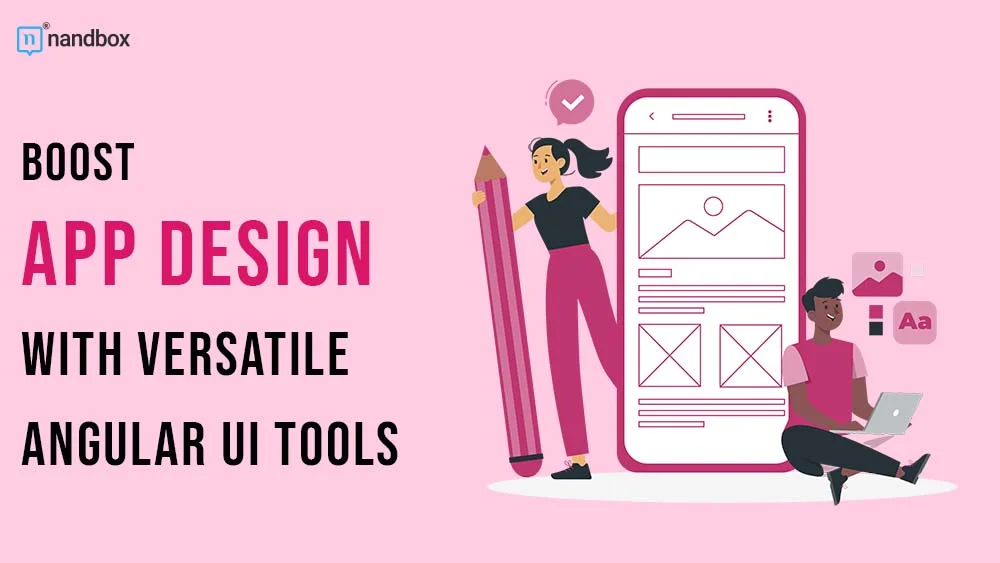In 2024, the app design landscape continues to evolve. You want tools that adapt and empower your creativity. Angular UI solutions bring versatility and flexibility to your projects. No-code platforms expand these possibilities, allowing anyone to craft unique user experiences. Imagine integrating customizable components without a hitch. What if you could simplify complex interfaces? This article explores how you can leverage Angular-based tools for smarter designs and better user engagement. Stick around for insights that can elevate your next app design with angular tools!
Customizing User Experiences with Angular Components
Customizing user experiences with Angular components offers immense possibilities. You can create tailored interfaces that resonate with your audience. Angular’s modular design allows you to mix and match components effortlessly, fitting various needs and styles.
Think about it: what if each button or dropdown in your app felt unique? You achieve this by leveraging pre-built Angular UI elements or crafting custom ones from scratch. This flexibility empowers designers and developers alike to make bold choices that enhance usability.
Explore options like responsive layouts and interactive features that engage users effectively. Personalization is key in today’s app landscape, so harnessing these tools can set your project apart from the rest!
Enhancing Performance: Angular UI Tools at Work
Angular UI tools significantly boost app performance and user engagement. With components like the Angular data grid and UI controls, you streamline data presentation while ensuring responsiveness. These solutions allow developers to manage complex datasets effectively, presenting information clearly.
Developer.mescius.com offers advanced enhancements that integrate seamlessly into your projects. Imagine loading large volumes of data without compromising speed or functionality. This is possible with their innovative controls designed for efficiency.
You gain a competitive edge by leveraging these tools, allowing for smoother interactions and tailored user experiences. Prioritizing performance transforms how users perceive your application—make it stand out!
The Role of No-Code Platforms in Modern App Design
No-code platforms revolutionize how you approach app design. They lower barriers, making it easier for anyone to create functional applications without extensive coding knowledge. Here’s why these platforms are game-changers:
- Accessibility: You don’t need a technical background to get started.
- Speed: Rapid prototyping lets you bring ideas to life quickly.
- Flexibility: Easily customize components and workflows to fit your vision.
By integrating Angular-based tools into no-code environments, users can enhance their projects with robust features. This combination empowers creators, fosters innovation, and ultimately results in more engaging user experiences!
Navigating Challenges: Common Pitfalls and Solutions in UI Design
Designing user interfaces with Angular can present challenges. One common pitfall is underestimating the importance of usability. An attractive design matters, but if users struggle to navigate, they’ll abandon your app. Another challenge involves managing performance issues when dealing with complex data.
To tackle these problems, focus on user feedback throughout the development process. Incorporate features like the Angular data grid and UI controls for effective data management and presentation. You also want to test your designs across devices to ensure a seamless experience.
By identifying potential hurdles early on, you set your project up for success and create an engaging application that meets user needs!
Emerging Trends in UI/UX Customization for 2024 and Beyond
As we look ahead, several trends are shaping UX/UI customization. Staying informed helps you remain competitive in a rapidly changing landscape. Here’s what to watch:
- Increased personalization: Users expect tailored experiences that cater to their preferences.
- Dark mode options: More apps are adopting dark themes for user comfort and aesthetics.
- Micro-interactions: Small animations enhance usability and engagement, creating a more interactive feel.
Angular tools play a vital role in implementing these trends. By utilizing the Angular data grid and UI controls, developers can easily incorporate personalized elements into their applications. Embracing these emerging trends ensures your designs resonate with users well into the future!
Conclusion
Incorporating versatile Angular UI tools transforms your app design approach. Embrace no-code platforms for creativity and flexibility. Leverage the Angular data grid and UI controls to enhance user experiences while staying ahead of emerging trends.
By focusing on customization, you create applications that engage users and meet their needs – setting your projects up for success in today’s competitive landscape!



